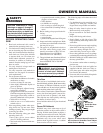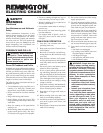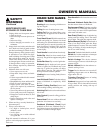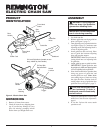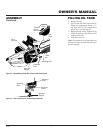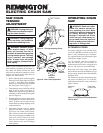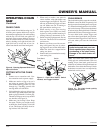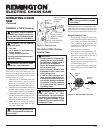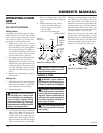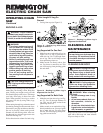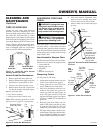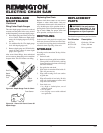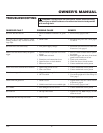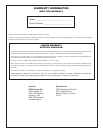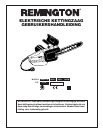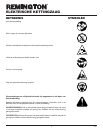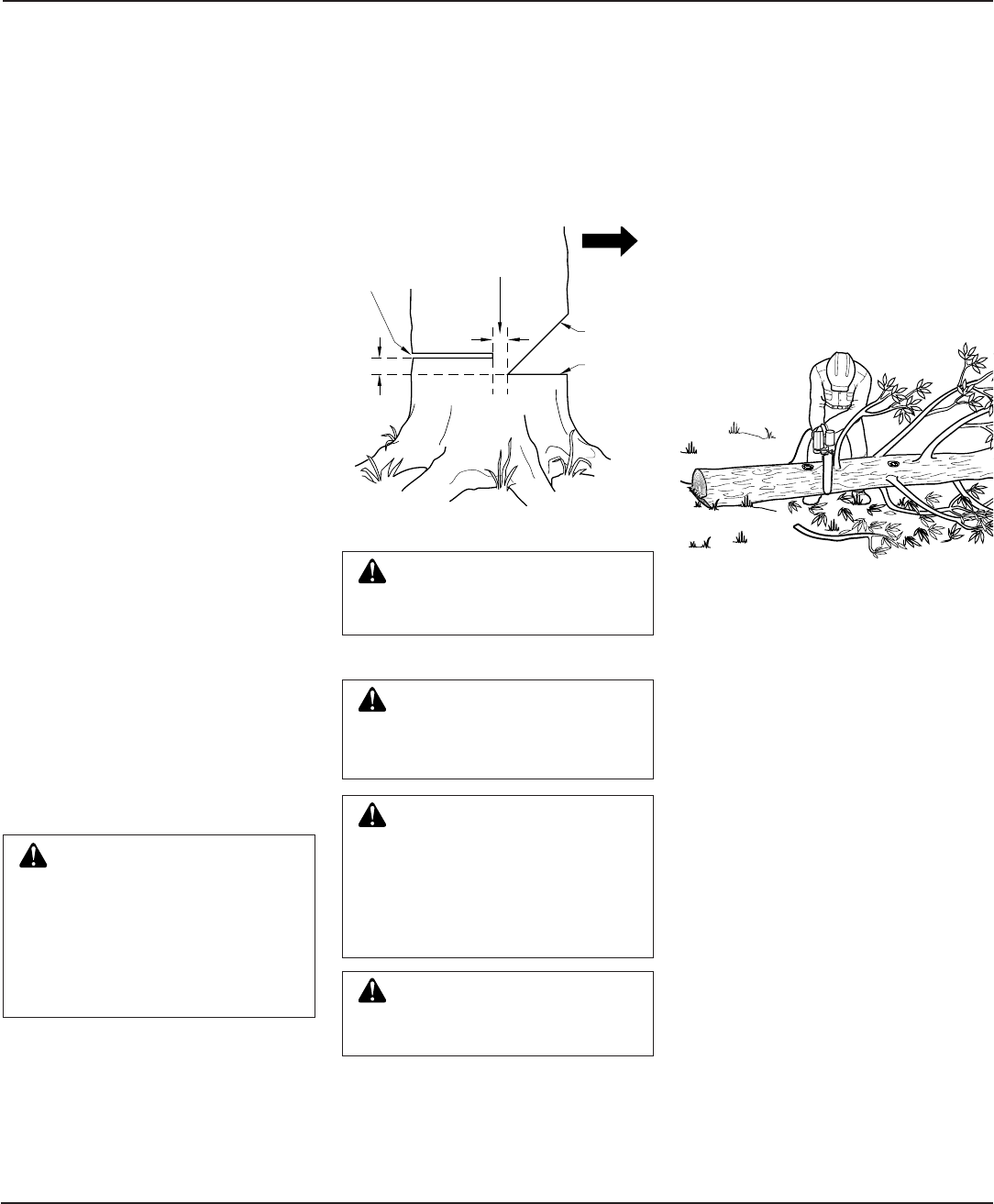
102891
OWNER’S MANUAL
11
FELLING PROCEDURE
Felling Notch
A properly placed felling notch will deter-
mine direction tree will fall. Place felling
notch on side of tree in direction you want
tree to fall (see Figure 13). Follow direc-
tions below to create a felling notch.
1. Make lower notch cut as close to
ground as possible. Hold saw so guide
bar is horizontal. Cut 1/3 the diameter
of tree trunk (see Figure 13).
Note:
Al-
ways make this horizontal lower notch
cut first. If you make this cut second,
tree can pinch chain or guide bar.
2. Start upper notch cut the same distance
above first cut as first cut is deep.
Example:
If lower notch cut is 20 cen-
timeters deep, start upper notch cut 20
centimeters above it. Cut downward at
45° angle. The upper notch cut should
meet end of lower notch cut (see Fig-
ure 13).
3. Remove tree trunk wedge created by
notching cuts.
Felling Cut
1. Make felling cut five centimeters higher
than lower notch cut and on opposite
side of tree (see Figure 13). Keep fell-
ing cut parallel to lower notch cut.
2. Cut towards notch.
WARNING: Do not cut all the
way through tree. Leave about
five centimeters of tree diameter
uncut directly behind felling
notch (see Figure 13). This uncut
portion acts as a hinge. The hinge
helps keep tree from twisting and
falling in wrong direction.
3. As felling cut nears hinge, tree should
begin to fall.
Note:
If needed, drive
wedges into felling cut to control di-
rection of fall. If tree settles back and
pinches chain, drive wedges into fell-
ing cut to remove saw. Only use wedges
made of wood, plastic, or aluminum.
OPERATING CHAIN
SAW
Continued
Never use wedge made of steel. This
could cause kickback and damage to
chain.
4. When tree begins to fall, quickly
•remove saw from felling cut
•release trigger to turn saw off
• put saw down
•exit area using retreat path
WARNING: Be alert for falling
overhead limbs. Watch your foot-
ing while exiting area.
LIMBING A TREE
WARNING: Avoid kickback.
Kickback can result in severe in-
jury or death. See
Kickback,
pages
3 and 4, to avoid risk of kickback.
WARNING: When cutting limb
that is under tension, use extreme
caution. Be alert for wood spring-
ing back. When wood tension is
released, limb could spring back
and strike operator causing se-
vere injury or death.
CAUTION: Seek professional
help if facing conditions beyond
your ability.
Figure 13 - Felling A Tree
Hinge
Direction of Fall
3rd Cut -
Felling Cut
5 cm
5 cm
Figure 14 - Limbing A Tree
Limbing is removing branches from a fallen
tree. Make sure your footing is firm. Keep
feet apart. Divide your weight evenly on
both feet. Do not remove larger limbs under
tree that support log off ground. Remove
each limb with one cut (see Figure 14).
Clear cut limbs from work area often. This
will help maintain a safe work area.
Make sure you start your cut where limb
will not pinch saw during cutting. To avoid
pinching, start cut on freely hanging limbs
from above limb. Start cut on limbs under
tension from under limb. If pinch occurs,
turn saw off, lift limb, and remove saw.
Continued
2nd Cut -
Upper
Notch
Cut
1st Cut -
Lower
Notch
Cut



